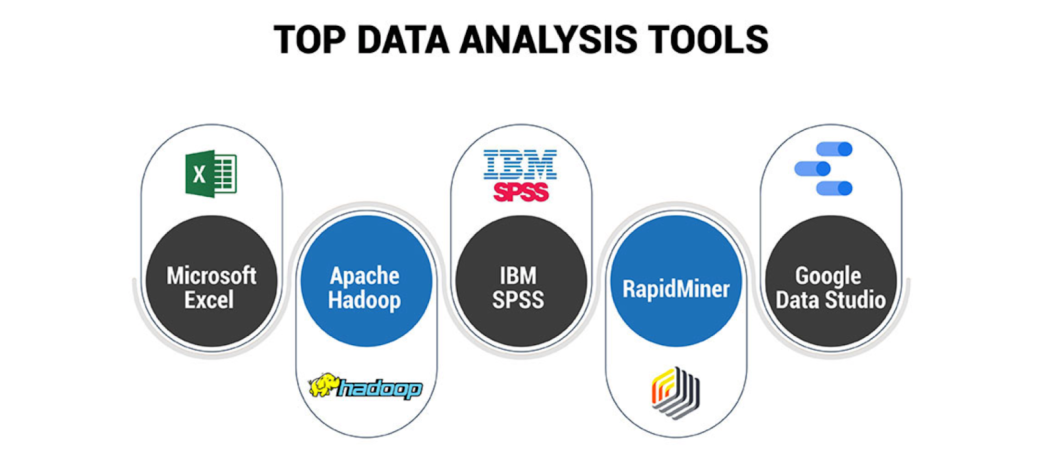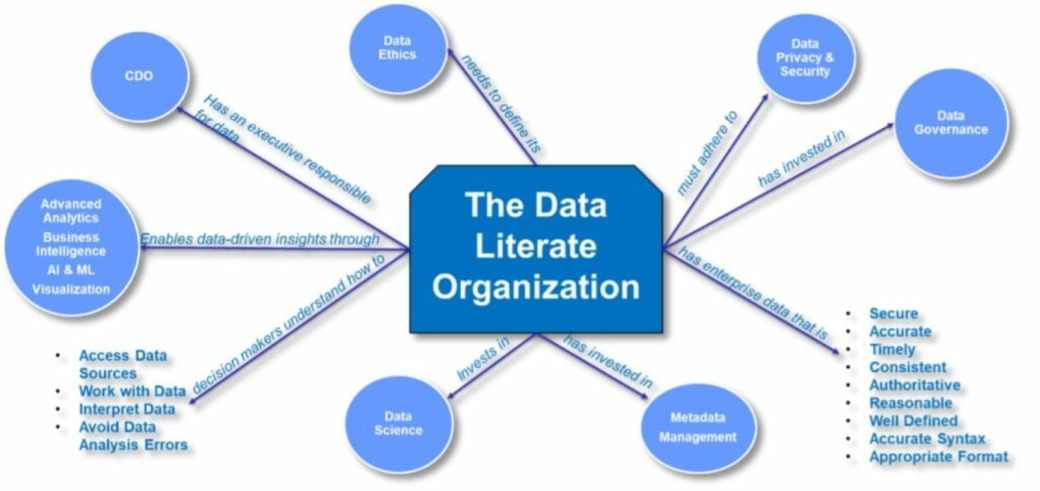

Updated July 22, 2025
Data integration can realize a systematic decision-making culture in all sections of the organization. To navigate intricate data and tactical undertakings within your organization, the team should have specific and clear analytical solutions available. This will enhance productivity in the long term and set the organization up for success.
To remain profitable and sustain a competitive advantage in the market, data has to be used to make critical business decisions. Usually, a data culture requires the organization to be stratified with operable and incisive data so that decisions can be made at upper, middle, and lower levels in a timely and precise manner.
Obtaining data will be easier, and transforming it into information will be as easy as pie if the right data analytics strategies are employed. This enables the team to make important business moves and take critical steps based on the insights derived from the complex data sets.
In addition, when the team can easily access data and the right analytical tools are provided, the success of the organization is guaranteed for years to come while placing the organization on the front line of operational efficiency and effectiveness.
In a data-driven organization culture, decisions are made after data has been analyzed and not by pure guesswork.
In addition, they take training seriously so that employees understand how to use and interpret data. Moreover, these organizations promote a culture of continuous improvement where processes and strategies are adjusted based on data analyses.
Adopting a data-driven culture can be beneficial in many ways. Businesses with robust data cultures typically report positioning themselves competitively in the marketplace, achieving faster speed-to-market, improved profits, and higher employee engagement.
Moreover, decision-making is greatly enhanced, which in turn improves customer service and achieves optimal efficiency in business operations.
To start, it is important to look into your data ecosystem first. Many companies are facing challenges regarding the maintenance of their data. As per reports, approximately 43% of company IT decision-makers in the year 2023 reported that managing data expenses was one of the more challenging aspects of their roles.
Furthermore, the data could be managed perfectly, but due to the sheer volume and variety, it may be quite challenging to access. Implementing data streaming solutions can help organizations process real-time data efficiently, ensuring seamless access to critical insights. The organizational structure should be capable of handling perpetually growing datasets.
Next, look into the scope of data accessibility in your company. It is no simple task to make sense of the maximum utilization of the available data. However, effective data management goes a long way in achieving successful implementation of the data strategies. Additionally, knowing how to utilize your information is of the utmost importance.
In a 2024 survey, 86% of leaders rated data literacy as critical within their teams daily. Look into how your team is prepared to analyze and use the data when it comes to making sound decisions.
From that data, consider what you want the outcome to be. Companies that work knowing that they have a target object available are assured of achieving the design data strategy that improves their objectives and guarantees that useful data initiatives set forth will certainly accomplish the intended outcome.
Choosing the right analytical tools is crucial for an organization to use its data efficiently. Here is an easy guide to help you make optimal choices.

With countless options available, selecting the best one requires understanding your organization’s needs, budget, and technical capabilities.
The BADIR framework allows your organization to centralize data decision-making. Implementing the BADIR framework enables businesses to make data-backed decisions with confidence.
Each part of this acronym is essential in structuring and evaluating the information gathered by your business.

Like every other initiative, business questions also have stakeholders alongside associated pain points that must be addressed. If retention rates are declining, a relevant business question is: What factors in your service contribute to customer churn?
Construct an analysis plan associated with a hypothesis. From the assumptions given, derive the critical metrics and the expected analysis methods. A focus outline guarantees a relevant and effective analysis of executing your objectives. For instance, you might expect a lack of adequate ongoing support is causing a high customer attrition rate. Therefore, you will examine support tickets during the analysis.
During this stage, gather as much customer data as you need from your plan while paying attention to the quality of the data collected. Look for relevant data sources, perform data profiling, and fill in gaps. You could conduct customer support log analysis, survey analysis, and transaction history review when dealing with customer support.
Study the collected data to look for patterns and relevant information. Utilize statistical techniques and machine learning tools to validate or refute your beliefs. For instance, if the data indicates that customers who are likely to churn the most are the ones who have not had their support issues resolved, that would be incredibly useful in the next step.
Your findings should not remain as mere information; instead, develop rational ways to implement them. Form thoroughly rational plans on how to address the challenges you have pinpointed. One could recommend increasing the support staff or instituting post-support follow-up procedures to address customer concerns adequately based on the example.
Keep the following steps in mind while modifying the BADIR framework for your purposes for successful implementation:
This iterative approach ensures continuous improvement and adaptability, making data-driven decisions more effective over time.
Creating comprehensive educational programs is essential. These programs are known to increase productivity and performance significantly. Companies with strong training programs have an astounding 218% higher employee revenue than those lacking structured training.

Encourage a culture where sharing information is the standard. When employees have access to different kinds of data and are willing to share their thoughts, it results in better analysis and decision-making. This fosters trust but, more importantly, empowers employees to meaningfully participate and add value to the organization.
Give your team the assurance and tools needed to use data in their day-to-day functions. In companies that pay attention to data literacy, everyone within the organization feels more empowered and is more likely to remain with the organization. As a result, everyone is happier which leads to better decisions and a more responsive organization.
In the efforts to analyze data for operational use, protecting sensitive information becomes very crucial. A clear example of a data breach is an event that happened last year where approximately 26% of Americans reported having unauthorized purchases made on their debit or credit cards.
In order to defend your agency as well as clients:
Shifting to data-centric business models comes with pushback from employees who have become accustomed to the conventional way of doing things. Research shows that over two-thirds of executives consider transforming organizational culture and processes as the most significant hurdle to becoming more data-centered.
Here is how to deal with this challenge:
Effective decision-making rests on the accuracy of data which is both reliable and valid. Nevertheless, data mismanagement remains a common problem, indicating why less than 50% of corporate strategies claim to focus on analytics and data as a major value driver for the business.
To improve the quality of data, consider the following steps:
By implementing these measures, organizations can strengthen their data foundation, improve decision-making, and gain a competitive edge in today's data-driven business landscape.
KPIs state the measurable outcomes within business objectives that reveal how successfully data projects have been integrated. They are useful for tracking performance over extended periods of time and making objective decisions rather than presupposed ones.
For instance, the amount of accurate data available can calculate a data's accuracy level, while a company's efficiency can be measured by the time taken to produce reports.
Feedback is crucial for understanding how effective the analytical tools provided to the users have been. It is vital that the feedback is easy to gather and analyze to determine whether the tools served their purposes or not. Important information can be gathered through user surveys, performance evaluations, and tracking their usage in real-time.
Your data practices should seamlessly adjust to new business objectives to maximize effectiveness. This necessitates an uninterrupted, continuous alignment of data strategies with industry benchmarks, trends, and the internal values of the organization's data culture.
Encouraging collaboration and offering training opportunities enables employees to enhance their data skills, leading to better business decisions. Also, accessing different data sources will give a better insight into the actual performance, enabling better business decisions.
Building a constant learning and changing culture is imperative for organizations willing to remain data-driven. Allowing employees to acquire new knowledge and skills frequently enables responsiveness to change. It also enables individuals to enhance their capabilities while enabling the organization to better utilize its data resources and foster innovation within the company.


